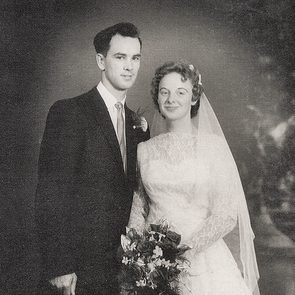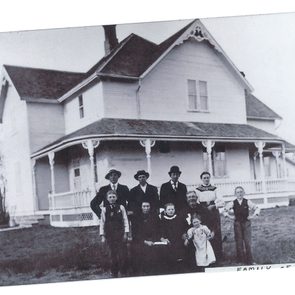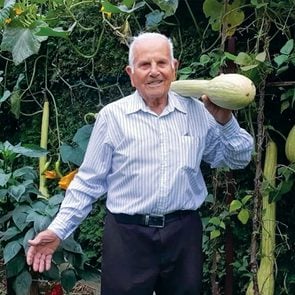I Discovered a Remarkable Romance Hidden Among the Branches of My Family Tree
An amateur genealogist uncovers a love story for the ages.
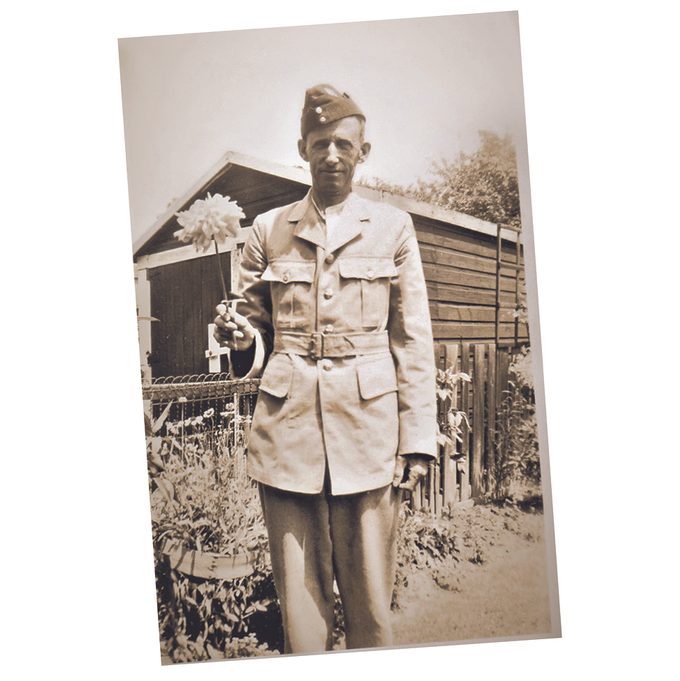
Late one night, after doing some work on the family tree, I realized that hidden in my grandparents’ timelines was a love story about two young immigrants finding each other in Toronto—with a little help from a dryland farmer in Saskatchewan.
Herbert and Julia were both born in England: Herbert William Easto in 1886 in the Borough of Wandsworth in South London. Julia Holborow was born in 1891 in Tetbury, County of Gloucestershire in England’s South West region. Distance and class distinctions would surely have kept them apart in England. However, as fate would have it, both immigrated to Canada in the early 1900s.
Herbert’s adventure began in 1906 with the decision to immigrate to Canada. He left England aboard the Dominion Line SS Norseman bound for Halifax. It’s not hard to imagine him peering out over the dark waters of the Atlantic, musing, “Wot the ’ell ’ave I got myself into?”
He’d already signed up with the Canadian Employment Agency, which connected new immigrants with employers. The agent assured him of an office job in Toronto. When the ship docked in Halifax, he was instead herded onto a transcontinental train bound for Swift Current, Saskatchewan. Blimey! Someone at the CEA had changed Herbert’s occupation listing from “clerk” to “farmer.” After endless gruelling days on a bone-shaking “Colonist” rail car, Herbert arrived—tired, messy, smelly, miserable and fearful. During the journey, he’d heard accounts of terrible working conditions, abusive employers and harsh living arrangements. Oh, crikey! He knew nothing of farming. Perhaps his boss, angry at being saddled with a lanky office clerk from London, would leave him standing on the platform!
Did the wind ever stop blowing in Swift Current? How could a farm even exist in this dry, Prairie grassland? Farmer Murphy, while not impressed with his new farmhand, had few options. It was seeding time. He was in no position to be picky. So began Herbert’s stint on a dryland farm just outside Swift Current.
Mr. Murphy, a jovial Irishman, and his sturdy German wife, had two strong and capable daughters. Happily, the family found Herbert’s cockney accent and bumbling efforts at farm work endearing. Whatever his shortcomings, he approached each challenge with courage and a chipper resolve. Herbert never grumbled. Farming taught him a lot about hard work, family, Prairie hospitality and handling horses. He grew fond of the Murphy family, who had opened home and hearts to a hapless stranger. He had only one lingering complaint: the head of the family was addicted to cornbread! And so the family ate it at breakfast. They ate it at lunch. They ate it as dessert drenched in maple syrup! And he never could get used to the wind, blowing dust and extremes of heat and cold.
Sometime between 1909 and 1910, Herbert bid farewell to his Saskatchewan friends, climbed aboard a transcontinental train and headed east. Years later, he told me, “I got on that train and didn’t get off until it reached Toronto. Not even at a station, afraid I’d be left behind.”
He’d barely gotten off the train in Toronto when a beefy Englishman collared him:
“You English?”
“Yes.”
“Protestant?”
“Uh…yes?”
“Can you drive a team of horses?” “Oh, that I can do, yes, indeed.” “You’re hired. Follow me!”
And that’s how Herbert William Easto became a brewery delivery man driving a horse-drawn dray through the streets of Toronto.
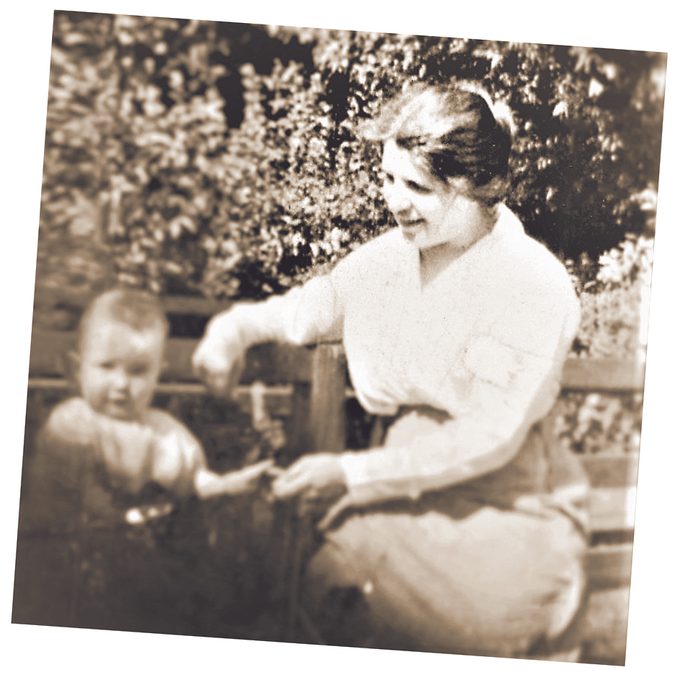
Julia’s Side of the Story
Julia’s father, Robert Holborow, died accidentally in December of 1900. Before Robert’s death, the family lived a comfortable life in Tetbury as members of England’s rapidly expanding middle class of wealthy merchants and shopkeepers. Unlike many men of the era, Robert made provisions in his will for his wife Fanny and their three daughters. In 1902, Fanny was married a second time to Walter H. Wakefield, 15 years her junior. According to some accounts, the union was not well received by her former father-in-law.
After five years of marriage and two children, Fanny and Walter transplanted their blended family to Canada. In May of 1907, Julia, with her mother Fanny Holborow-Wakefield, her Wakefield siblings Harold and Dorothy, and her sisters Esther and Annie Holborow, sailed from England. The ship was the CP Line SS Lake Manitoba. After arriving in Quebec City, the family made their way to Toronto, where young Dorothy tragically died two weeks later. Walter Wakefield travelled alone to New York City aboard the White Star ocean liner Celtic before journeying north to join his family in Toronto. Walter Wakefield soon found work as a grocery clerk. Fanny took in boarders to help make ends meet. For the Holborow girls, this was an embarrassing step down from their previous life in Tetbury.
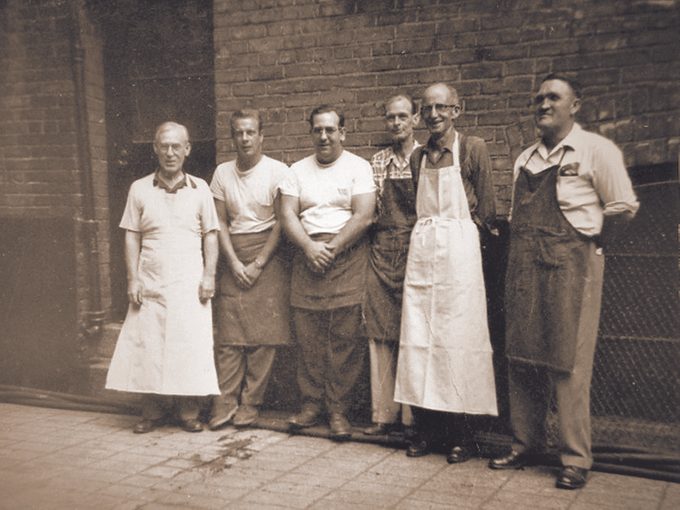
Love Comes Calling
As with most of Toronto’s English immigrants, ale was a staple in the Wakefield household. Mrs. Wakefield usually met the drayman at the curb to collect the week’s delivery. One sweltering, humid summer day, she sent Julia in her stead. The petite strawberry blonde with the sensible shoes and the musical voice was beyond handsome. She was magnetic. The drayman—Herbert—was smitten! He must meet her! He peppered a few neighbour women with questions when he delivered their ale. Some smiled knowingly; others thought they should report him to the constabulary. He learned that the family took in male boarders, and he needed a place to stay. Perfect!
Clutching his pay packet, Herbert called hopefully at the house on Major Street, grip in hand. And that’s how Herbert met Julia, the love of his life. Without the clerical error that sent the cockney lad to Saskatchewan, where a kind farmer taught him how to handle a team of horses, chances are my grandparents would never have met. And I’d not be here to share this tale of two young immigrants from vastly different social classes who met and fell in love in Toronto.
Herbert William Easto and Julia Holborow were married on April 8, 1911. The groom’s father, Henry, and mother, Frances, came all the way from England to attend the wedding. The couple had five children: Lloyd, Robert, Joyce, and two infants who did not survive past their first year, Robert and Ronald. After giving up brewery work, Herbert spent the rest of his working life in the bookbinding department of Ryerson Press. True to his word, he rarely left the Toronto City Limits, but he and Julia did return to England on their 50th wedding anniversary. Herbert died in 1963, Julia in 1977. Their ashes rest together at St. James Cemetery near the Chapel of St. James-the-Less, Toronto.
Next, read the powerful story of how an act of kindness meant the world to one postwar immigrant family.
